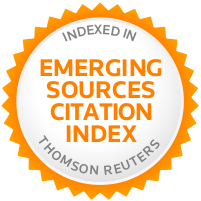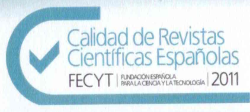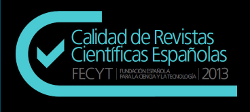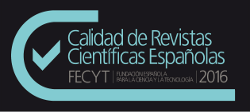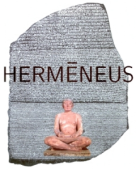II Coloquio Hermēneus
de Traducción e Interpretación
Mediación lingüística y humanidades:
tradición, innovación, revolución
Facultad de Traducción e Interpretación
Campus Universitario Duques de Soria
Universidad de Valladolid
Soria, del 6 al 8 de mayo de 2020

Posted in Coloquios Hermēneus | Comments (0)
I Coloquio Hermēneus
Los estudios de Traducción e Interpretación basados en corpus: de lo local a lo global
Facultad de Traducción e Interpretación
Universidad de Valladolid (Campus de Soria)
26 y 27 de marzo de 2014
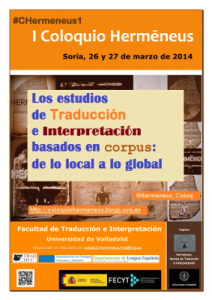
Publicaciones:
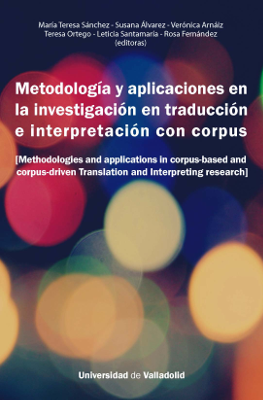
Pinchando en la imagen se accede al libro a texto completo. Los capítulos se encuentran igualmente a texto completo en el espacio del repositorio institucional UVaDoc (buscar por nombre de autor).
Se pueden adquirir copias del libro DVD, que contiene un anexo con los vídeos de las ponencias del coloquio, en el sitio web de Ediciones Universidad de Valladolid, o, alternativamente, escribiendo a María Teresa Sánchez Nieto (maysn at lia.uva.es).
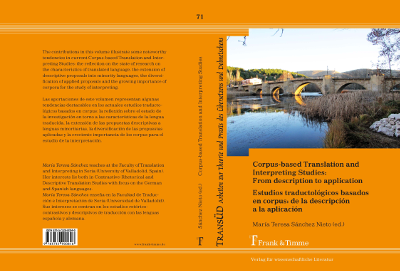 Se pueden adquirir copias de este volumen directamente de la editorial a través de este formulario.
Se pueden adquirir copias de este volumen directamente de la editorial a través de este formulario.
Posted in Coloquios Hermēneus | Comments (0)
I Coloquio Hermēneus
Los estudios de Traducción e Interpretación basados en corpus: de lo local a lo global
Facultad de Traducción e Interpretación
Universidad de Valladolid (Campus de Soria)
26 y 27 de marzo de 2014

Publicaciones:

Pinchando en la imagen se accede al libro a texto completo. Los capítulos se encuentran igualmente a texto completo en el espacio del repositorio institucional UVaDoc (buscar por nombre de autor).
Se pueden adquirir copias del libro DVD, que contiene un anexo con los vídeos de las ponencias del coloquio, en el sitio web de Ediciones Universidad de Valladolid, o, alternativamente, escribiendo a María Teresa Sánchez Nieto (maysn at lia.uva.es).
 Se pueden adquirir copias de este volumen directamente de la editorial a través de este formulario.
Se pueden adquirir copias de este volumen directamente de la editorial a través de este formulario.
Posted in Coloquios Hermēneus | Comments (0)
La rivista Hermēneus, pubblicata dalla Facoltà di Traduzione e Interpretazione di Soria (Università di Valladolid), invita a proporre contributi per i suoi prossimi numeri. I contributi possono essere in forma di saggio, traduzione breve o recensione di volumi inerenti agli studi sulla traduzione e sull’interpretazione.
Il Progetto Hermēneus, all’interno del quale si colloca sia la pubblicazione della rivista Hermēneus che la serie di monografie Vertere, nonché la serie di traduzioni inedite raccolte in Disbabelia, vanta una lunga esperienza e un grande prestigio, sia a livello nazionale che internazionale. E’ infatti inserito in diversi database, tra cui Web of Science (WOS), Emerging Sources Citation Index (ESCI) / Scopus / EBSCO Humanities Source / EBSCO Fuente Académica Premier / Linguistics Abstracts (LABS) / Linguistics and Language Behaviour Abstracts (CSA) / MLA, Modern Language Association Database / British Humanities Index (BHI) de ProQuest / FRANCIS / PASCAL / Linguistics Bibliography (BRILL) / Translation Studies Abstracts (St. Jerome: Manchester) / Ulrichs Web / GALE CENGAGE Learning, Informe Académico / Cabell´s Directory of Publishing Opportunities / DIALNETplus / BITRA (Bibliografía de Interpretación y Traducción, Universidad de Alicante) / A Bibliography of Literary Theory, Criticism, and Philology (Universidad de Zaragoza) / LATINDEX.
Per ulteriori informazioni, si prega di consultare le linee guida per l’elaborazione e presentazione di contributi nei seguenti links: www5.uva.es/hermeneus e revistas.uva.es/index.php/hermeneus.
Nell’augurarci di ricevere presto un contributo da parte vostra, inviamo i nostri più cordiali saluti,
Comitato Editoriale Hermēneus
Facultad de Traducción e Interpretación
Campus Universitario Duques de Soria, s/n
42004 Soria
(España / Spagna)
Posted in Petición de publicaciones | Comments (0)
A Revista Hermēneus, publicada pela Faculdade de Tradução e Interpretação de Soria (Universidade de Valladolid), aceita para publicação nos seus próximos números contributos na forma de artigos, traduções curtas ou recensões críticas no campo da Tradução e Interpretação.
O Projecto Hermēneus, dentro do qual surge a publicação da revista Hermenēus, a colecção de monografias Vertere bem como a colecção de traduções desconhecidas Disbabelia, conta com uma vasta experiência e um grande prestígio nacional e internacional, integrando actualmente as bases de dados Web of Science (WOS), Emerging Sources Citation Index (ESCI) / Scopus / EBSCO Humanities Source / EBSCO Fuente Académica Premier / Linguistics Abstracts (LABS) / Linguistics and Language Behaviour Abstracts (CSA) / MLA, Modern Language Association Database / British Humanities Index (BHI) de ProQuest / FRANCIS / PASCAL / Linguistics Bibliography (BRILL) / Translation Studies Abstracts (St. Jerome: Manchester) / Ulrichs Web / GALE CENGAGE Learning, Informe Académico / Cabell´s Directory of Publishing Opportunities / DIALNETplus / BITRA (Bibliografía de Interpretación y Traducción, Universidad de Alicante) / A Bibliography of Literary Theory, Criticism, and Philology (Universidad de Zaragoza) / LATINDEX.
Os investigadores interessados em informações adicionais ou em consultar as normas de publicação da Revista, podem fazê-lo nos seguintes endereços: www5.uva.es/hermeneus e revistas.uva.es/index.php/hermeneus.
Esperando contar com a sua colaboração em próximos números, apresenta cordiais saudações,
O Conselho de Redacção do Projecto Hermēneus
Facultad de Traducción e Interpretación
Campus Universitario Duques de Soria, s/n
42004 Soria
(España / Espanha)
Posted in Petición de publicaciones | Comments (0)
Die Zeitschrift Hermēneus, Publikation der Fakultät für Übersetzen und Dolmetschen in Soria (Universität Valladolid), fordert Sie auf, mit Beiträgen an den folgenden Ausgaben mitzuwirken und Artikel, kurze Übersetzungen oder Rezensionen im Bereich Übersetzen und Dolmetschen zu publizieren.
Das Hermēneus Projekt in dessen Rahmen die Publikation sowohl der Zeitschrift Hermenēus als auch ihrer Monografie Vertere und der Sammlung unbekannter Übersetzungen Disbabelia entwickelt wird, verfügt über eine umfassende Erfahrung und ein großes nationales und internationales Ansehen. Aus diesem Grund ist sie gegenwärtig auch in den folgenden Datenbanken erfasst: Web of Science (WOS), Emerging Sources Citation Index (ESCI) / Scopus / EBSCO Humanities Source / EBSCO Fuente Académica Premier / Linguistics Abstracts (LABS) / Linguistics and Language Behaviour Abstracts (CSA) / MLA, Modern Language Association Database / British Humanities Index (BHI) de ProQuest / FRANCIS / PASCAL / Linguistics Bibliography (BRILL) / Translation Studies Abstracts (St. Jerome: Manchester) / Ulrichs Web / GALE CENGAGE Learning, Informe Académico / Cabell´s Directory of Publishing Opportunities / DIALNETplus / BITRA (Bibliografía de Interpretación y Traducción, Universidad de Alicante) / A Bibliography of Literary Theory, Criticism, and Philology (Universidad de Zaragoza) / LATINDEX.
Jene Wissenschaftler, die an ergänzenden Informationen oder an den Publikationsrichtlinien interessiert sind, können sie unter der folgenden Adressen finden: www5.uva.es/hermeneus und revistas.uva.es/index.php/hermeneus.
Wir hoffen mit Ihrem Beitrag in den folgenden Bänden rechnen zu können.
Mit freundlichen Grüssen,
El Comité de Redacción del Proyecto Hermēneus
Facultad de Traducción e Interpretación
Campus Universitario Duques de Soria, s/n
42004 Soria
(España / Spanien)
Posted in Petición de publicaciones | Comments (0)
La revue Hermēneus publiée au sein de la Faculté de Traduction et d’Interprétation de Soria (Université de Valladolid, Espagne), vous invite à participer à ses nouveaux numéros par le biais des publications d’articles, de traductions courtes ou de comptes-rendus dans le domaine de la Traduction et de l’Interprétation.
Le Proyecto Hermēneus, dans lequel s’inscrit la publication tant de la revue Hermenēus que de la monographie Vertere ainsi que la collection de traductions inédites Disbabelia, repose sur une grande expérience et jouit d’un grand prestige national et international, puisqu’il fait actuellement partie de la base de données Web of Science (WOS), Emerging Sources Citation Index (ESCI) / Scopus / EBSCO Humanities Source / EBSCO Fuente Académica Premier / Linguistics Abstracts (LABS) / Linguistics and Language Behaviour Abstracts (CSA) / MLA, Modern Language Association Database / British Humanities Index (BHI) de ProQuest / FRANCIS / PASCAL / Linguistics Bibliography (BRILL) / Translation Studies Abstracts (St. Jerome: Manchester) / Ulrichs Web / GALE CENGAGE Learning, Informe Académico / Cabell´s Directory of Publishing Opportunities / DIALNETplus / BITRA (Bibliografía de Interpretación y Traducción, Universidad de Alicante) / A Bibliography of Literary Theory, Criticism, and Philology (Universidad de Zaragoza) / LATINDEX.
Les chercheurs souhaitant des informations complémentaires ou désirant connaître les normes de publication, peuvent consulter les sites web www5.uva.es/hermeneus et revistas.uva.es/index.php/hermeneus.
Comptant sur votre collaboration dans un des prochains numéros,
Sincères salutations,
Comité de Redacción du Proyecto Hermēneus
Facultad de Traducción e Interpretación
Campus Universitario Duques de Soria, s/n
42004 Soria
(España / Espagne)
Posted in Petición de publicaciones | Comments (0)
All the contributions must follow this style sheet based on the MLA guidelines; authors will be required to adapt the format of their articles if they have not done so beforehand.
GENERAL GUIDELINES
- Page size: A4
- Margins: 2,5 cm for all the margins
- Font: Times New Roman 11 throughout the whole text (including title, subtitles, notes, quotations, etc.)
- Bold and underlined types should be avoided, use italics instead.
- Only one space should be left after periods or other punctuation marks.
- The first line of each paragraph should be indented 1.25 cm from the left margin.
- The heading of the article must follow the following format:
Heading:
TRADUCCIÓN VS. MODERNIDAD: DEL PERÍODO CLÁSICO DE LA ESCUELA DE PRAGA A LA TRADUCTOLOGÍA DE LAS ÚLTIMAS DÉCADAS DEL SIGLO XX
Subheading:
Tradition vs. Modernity: from the Classical Period of the Prague School to the Translation Studies of the Final Decades of the 20 Century
Author:
Jana KRÁLOVÁ
Instituto de Traductología,
Facultad de Filosofía y Letras, Universidad Carolina, Praga
- Please stick to this style and avoid any other setter types, fonts and size in order to make the text format as simple as possible.
- Line spacing: single
- Please do not include headers, footers or page number.
- FOOTNOTES are preferred to ENDNOTES.
QUOTATIONS
- Short quotations (up to 40 words) should be incorporated into the text, using inverted commas (“ ”).
- Longer quotations should be indented without quotation marks and no italics. When referring to the works of others in your paper, use parenthetical citation, that is immediately following a quotation from a source or a paraphrase of a source’s ideas, you place the author’s name followed by a space, the year of publication and the relevant page number(s). Example:
| |
|
|
| |
(…) meaning is partly shaped by come specific syntactical, grammatical or rhetorical features, constituting the concrete content to be conveyed (Bondarko 1984:2). |
|
| |
|
|
|
- If the author’s name is used in the text of the paper, there is no need to repeat it in the citation. Example:
| |
|
|
| |
(…) according to Highet (1949:36), this was not a unidirectional process… |
|
| |
|
|
|
BIBLIOGRAPHY
- A list of bibliographical references should be provided at the end of the paper under the heading “References”.
Basic rules
- Capitalize each word in the titles of articles, books, etc, but do not capitalize articles, short prepositions, or conjunctions unless one is the first word of the title or subtitle. Example:
| |
|
|
| |
Gone with the Wind, The Art of War, There Is Nothing Left to Lose |
|
| |
|
|
|
- Use italics for titles of larger works (books, magazines) and quotation marks for titles of shorter works (poems, articles)
- If you have cited more than one work by a particular author, order the entries alphabetically by title, and use three hyphens in place of the author’s name for every entry after the first. Example:
| |
|
|
| |
Burke, Kenneth. A Grammar of Motives.
—. A Rhetoric of Motives. |
|
| |
|
|
|
- When an author or collection editor appears both as the sole author of a text and as the first author of a group, list solo-author entries first. Example:
| |
|
|
| |
Heller, Steven, ed. The Education of an E-Designer. Oxford: Oxford University Press, 2004.
Heller, Steven and Karen Pomeroy. Design Literacy: Understanding Graphic Design. Oxford: Oxford University Press, 2002. |
|
| |
|
|
|
- When the work you are citing has no known author, alphabetize the work by their title and use a shortened version of the title in the parenthetical citations in your paper. Example:
| |
|
|
| |
Baudrillard, Jean. Simulacra and Simulations.
Boring Postcards USA
Burke, Kenneth. A Rhetoric of Motives. |
|
| |
|
|
|
Citing books
- Books with one author:
Author’s surname, full name. Title of the Book. Place of publication: Publisher, year of publication. Example:
| |
|
|
| |
Swales, John. Genre Analysis: English in Academic and Research Settings. Cambridge: Cambridge University Press, 1990. |
|
| |
|
|
|
- Books with more than one author:
First author’s surname, full name, and second author’s full name surname. Title of the Book. Place of publication: Publisher, year of publication. Example:
| |
|
|
| |
Gillespie, Paula, and Neal Lerner. The Allyn and Bacon Guide to Peer Tutoring. Boston: Allyn, 2000. |
|
| |
|
|
|
- Books with more than two authors:
First author’s surname, full name, et al. Title of the Book. Place of publication: Publisher, year of publication. Example:
| |
|
|
| |
Wysocki, Anne, et al. Writing New Media: Theory and Applications for Expanding the Teaching of Composition. Logan, UT: Utah State UP, 2004. |
|
| |
|
|
|
- Anthologies or collections (edited books):
Author’s surname, full name, ed(s). Title of the Book. Place of publication: Publisher, year of publication. Example:
| |
|
|
| |
Grazia, Magreta de, and Stanley Wells, eds. The Cambridge Companion to Shakespeare. Cambridge: Cambridge University Press, 2001. |
|
| |
|
|
|
- Book sections:
Author’s surname, full name. “Title of the Book Section”. Title of the Book. Ed. Editor’s name. Place of publication: Publisher, year of publication. Pages. Example:
| |
|
|
| |
Harris, Muriel. “Talk to Me: Engaging Reluctant Writers.” A Tutor’s Guide: Helping Writers One to One. Ed. Ben Rafoth. Portsmouth, NH: Heinemann, 2000.24-34. |
|
| |
|
|
|
Citing Journals and Periodicals
- Articles in a magazine or newspaper:
Author’s surname, full name. “Title of the Article.” Title of the Periodical Day Month Year: pages. Example:
| |
|
|
| |
Poniewozik, James. “TV Makes a Too-Close Call.” Time 20 Nov. 2000: 70-71. |
|
| |
|
|
|
- Articles in a scholarly journal:
Author’s surname, full name. “Title of Article.” Title of Journal Volume. Issue (Year): pages. Example:
| |
|
|
| |
Bagchi, Alaknanda. “Conflicting Nationalisms: The Voice of the Subaltern in Mahasweta Devi’s Bashai Tudu.” Tulsa Studies in Women’s Literature 15.1 (1996): 41-50. |
|
| |
|
|
|
- Anonymous articles:
«Title of the Article.» Title of the Periodical Day Month Year: pages. Example:
| |
|
|
| |
«Business: Global Warming’s Boom Town; Tourism in Greenland.” The Economist 26 May 2007:82. |
|
| |
|
|
|
Citing Electronic Sources
- An entire web site:
Name of Site. Date of Posting/Revision. Name of institution/organization affiliated with the site (sometimes found in copyright statements). Date you accessed the site . Example:
| |
|
|
| |
The Purdue OWL Family of Sites. 26 Aug.2005. The Writing Lab and OWL at Purdue University. 23 April 2006 <http://owl.english.purdue.edu>. |
|
| |
|
|
|
- A page on a web site:
Author’s surname, full name. “Title of page or article.” Name of Site. Date of Posting/Revision. Name of institution/organization affiliated with the site. Date you accessed the site . Example:
| |
|
|
| |
Stolley, Karl. “MLA Formatting and Style Guide.” The Owl at Pardue. 10 May 2006. Purdue University Writing Lab. 12 May 2006 <http://owl.english.purdue.edu/owl/resource/557/01/>. |
|
| |
|
|
|
- An article in a web magazine:
Author’s surname, full name. “Title of Article.» Title of Online Publication. Date of Publication. Date of Access . Example:
| |
|
|
| |
Bernstein, Mark. “10 Tips on Writing the Living Web.” A List Apart: For People Who Make Websites. Nº 149 (16 Aug.2002). 4 May 2006 <http://alistapart.com/articles/writeliving>. |
|
| |
|
|
|
- An article in an online scholarly journal:
Author’s surname, full name. “Title of Article.” Title of Online Scholarly Journal. Volume. Issue (Date of Publication): pages. Date of Access . Example:
| |
|
|
| |
Wheelis, Mark. “Investigating Disease Outbreaks under a Protocol to the Biological and Toxin Weapons Convention.” Emerging Infectious Diseases 6.6 (2000): 33 pars. 8 May 2006 <http://www.cdc.gov/ncidod/eid/vol6no6/wheelis.htm > |
|
| |
|
|
|
FOOTNOTES AND ENDNOTES:
- Endnotes and footnotes can be used occasionally for evaluative bibliographic comments, explanatory notes or other brief additional helpful information that might be too digressive for the main text. Example:
| |
|
|
| |
1 See Blackmur, especially chapters three and four, for an insightful analysis of this trend.
2 On the problems related to repressed memory recovery, see Wollens pp.120-35; for a contrasting view, see Pyle. |
|
| |
|
|
|
- The notes should be listed by consecutive superscript Arabic numbers and appear single-spaced in regular paragraph format (a new paragraph for each note).
Posted in Style sheet | Comments (0)
- Dr. Georges Bastin
April 27, 2006
- Dra. Charlotte Bosseaux
March 22, 2007
- Dª. Isabel González-Gallarza & Dª. Carmen Francí
March 28, 2007
- Piotr Romanowski, MPhil
April 10, 2008
- Dra. Denitza Bogonilova
May 6, 2008
- Dra. Iwona Kasperska
April 21, 2009
- Dra. Iwona Kasperska
April 21, 2009
- D. Charles Tiayon
May 11, 2009
- Dr. James J. Jewell
May 5, 2010
- Dr. Glyn Pursglove
April 5, 2011
- Dr. Gabriel Rodríguez Pazos
April 13, 2011
- Dra. Jana Králová
May 19, 2011
- Dña. M. Elena Nida
March 15, 2012
- Prof. Vladimer Luarsabishvili
April 24, 2012
- Lic. Xabier Lozano
May 21, 2012
- Lic. Sheila Daroca
May 14, 2012
- Dra. Miriam Sheghiri Domínguez
November 8, 2012
- Dña. Ángeles Flores and D. Manuel Guzmán
May 21, 2013
Posted in Conferencias-es | Comments (0)

